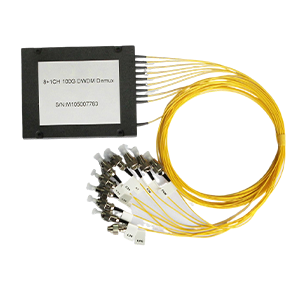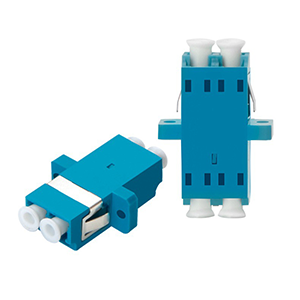Different types of network cables play an important role in modern networks. This article will compare the connectors of Cat5 and Cat6 network cables. We will first define the role and main components of network cables and outline the common classification standards for network cables. Next, we will introduce the RJ-45 connector commonly used in Cat5 network cables and describe its 8-pin design that supports a transmission rate of 100Mbps.
Then, we will explain that Cat6 network cables also use connectors similar to Cat5, but with a more optimized internal structure and support high-speed transmission of 1000Mbps. Finally, we will compare the differences between Cat5 and Cat6 network cable connectors in terms of physical structure, supported transmission rates, transmission distance and reliability.
What is a network cable
A network cable is a physical medium used to connect network devices, transmitting electrical or optical signals to achieve data communication. Common types of network cables include twisted pair and optical fiber, which are used in network environments such as local area networks and wide area networks.
1. The function and main components of network cables:
- The main function of network cables is to connect various network devices, such as routers, switches, computers, etc., to achieve data transmission.
- Network cables are composed of conductors, insulation layers and outer sheaths. The conductors are responsible for transmitting electrical signals, while the insulation layers and sheaths provide protection.
2. Common classification standards for network cables:
Network cables can be divided into the following main types according to performance and application scenarios:
- Cat5 (Category 5) network cables: support 10/100Mbps Ethernet transmission.
- Cat5e (Category 5 enhanced) network cables: support 10/100/1000Mbps Ethernet transmission.
- Cat6 network cable: supports 10/100/1000Mbps Ethernet, and has better transmission bandwidth and anti-interference performance.
- Cat6a (Category 6 augmented) network cable: supports 10Gbps Ethernet transmission.
- Cat7 network cable: supports 10Gbps Ethernet, and has higher bandwidth and better shielding performance.
Different types of network cables have differences in transmission rate, bandwidth, anti-interference, etc., and are suitable for different network application scenarios. In general, as a key component of wired networks, the classification standards of network cables reflect the performance requirements in different network environments.
Connectors of Cat5 network cables
Cat5 network cables usually use RJ-45 connectors and are suitable for Ethernet connections. This connector has 8 metal contacts and transmits data through twisted pair cables. It is widely used in local area networks and supports a maximum transmission rate of 100Mbps.
1. Common connector types for Cat5 network cables:
Cat5 network cables usually use RJ-45 type connectors. RJ-45 is a standard Ethernet network cable plug that can be connected to the interface of devices such as network cards.
2. Features of Cat5 network cable connectors:
(1) 8-pin design:
- RJ-45 connectors have 8 pins in total, which are used to connect the 8 wires inside the network cable.
(2) Support 100Mbps transmission rate:
- Cat5 network cables with RJ-45 connectors can support 100Mbps Ethernet transmission speed.
In general, the RJ-45 connector is the standard interface of Cat5 network cable, and its 8-pin design can meet the transmission requirements of 100Mbps Ethernet. This connection method has become one of the widely used standards in wired networks.
Cat6 network cable connector
Cat6 network cable also uses RJ-45 connector and is compatible with Cat5. It supports higher transmission rates, up to 10Gbps, suitable for high-speed network connections, and is commonly used in enterprise-level networks and data centers.
1. Common connector types for Cat6 network cables:
Like Cat5 network cables, Cat6 network cables also usually use RJ-45 type connectors. From the appearance, the connector of Cat6 network cable is very similar to that of Cat5 network cable.
2. Main differences of Cat6 connectors:
(1) More optimized internal structure:
- The internal structure and wiring method of Cat6 connectors have been optimized.
- This optimization can better suppress signal interference and improve transmission performance.
(2) Support 1000Mbps transmission rate:
- Cat6 network cable with RJ-45 connector can support Ethernet transmission speeds up to 1000Mbps (1Gbps).
- This has achieved a significant increase in transmission rate based on the 100Mbps that Cat5 network cable can only reach.
In general, although the connector of Cat6 network cable is similar to Cat5 in appearance, its internal structure and supported transmission rate have been significantly improved and upgraded. This enables Cat6 cables to play a more powerful role in high-speed networks.
Differences between Cat5 and Cat6 cable connectors
Cat5 and Cat6 cables both use RJ-45 connectors, but Cat6 cable connectors usually have stricter manufacturing standards to reduce crosstalk and signal loss, thereby supporting higher transmission rates and longer distances.
1. Differences in physical structure:
- Different conductor and shielding layer designs:
- The conductor and shielding layer design of Cat6 cables is more optimized to improve anti-interference performance.
- The structure of Cat5 cables is relatively simple.
2. Differences in supported transmission rates:
- Cat5 cables support up to 100Mbps Ethernet transmission rates.
- Cat6 cables support up to 1000Mbps (1Gbps) Gigabit Ethernet.
3. Differences in transmission distance and reliability:
- In terms of transmission distance, Cat6 cables usually have a longer support range.
- At the same time, Cat6 cables have more reliable and stable signal transmission and stronger anti-interference capabilities.
In general, Cat6 cables have significantly improved in physical structure, transmission rate, and reliability compared to Cat5. This makes Cat6 more suitable for high-bandwidth and long-distance network application scenarios.
Summary
Rational selection of network cable connectors is crucial to building a stable and efficient network system. Our company has long focused on the research and development and application of network cable technology and has rich practical experience. We provide a full range of Cat5, Cat6 and other network cable products, including various connector types, to meet the needs of different network environments.
Our network cable products use industry-leading technical solutions and have achieved excellent levels in transmission performance, reliability and compatibility. At the same time, our team of engineers will provide you with professional demand analysis and solution design services to ensure that the deployed network cable solutions can meet your actual needs to the greatest extent. Contact us now to learn more.
Category 5 And Category 6 Cable FAQ
Yes, both Category 5 (Cat5) and Category 6 (Cat6) cables typically use the same RJ45 connector for Ethernet networking.
An RJ45 connector is an 8-pin modular plug commonly used for Ethernet networking. It connects twisted-pair cables like Cat5 and Cat6 to network devices.
The wiring pattern (e.g., T568A or T568B) is the same for both Cat5 and Cat6 connectors, but the internal construction of Cat6 connectors may differ to support higher performance.
While you can technically use Cat5 RJ45 connectors on Cat6 cables, it is not recommended because Cat6 connectors are designed to maintain the cable’s higher performance standards.
Using a Cat5 connector on a Cat6 cable may limit the cable’s performance, potentially reducing its ability to support higher speeds and frequencies that Cat6 is designed for.
Yes, Cat6 connectors are backward compatible and can be used with Cat5 or Cat5e cables without any issues.
Cat6 connectors are recommended for Cat6 cables because they are designed to handle the higher frequencies and reduce crosstalk, ensuring optimal performance for 1 Gbps or 10 Gbps Ethernet.
No, Cat5 and Cat6 RJ45 connectors are physically the same size and shape, making them interchangeable in terms of fitting into Ethernet ports.
Cat6 connectors may use higher quality materials, such as gold-plated contacts and improved shielding, to better support high-speed data transmission and reduce interference.
Yes, you can mix Cat5 and Cat6 cables in the same network, but the overall network performance will be limited by the lower category cable and connectors used.




